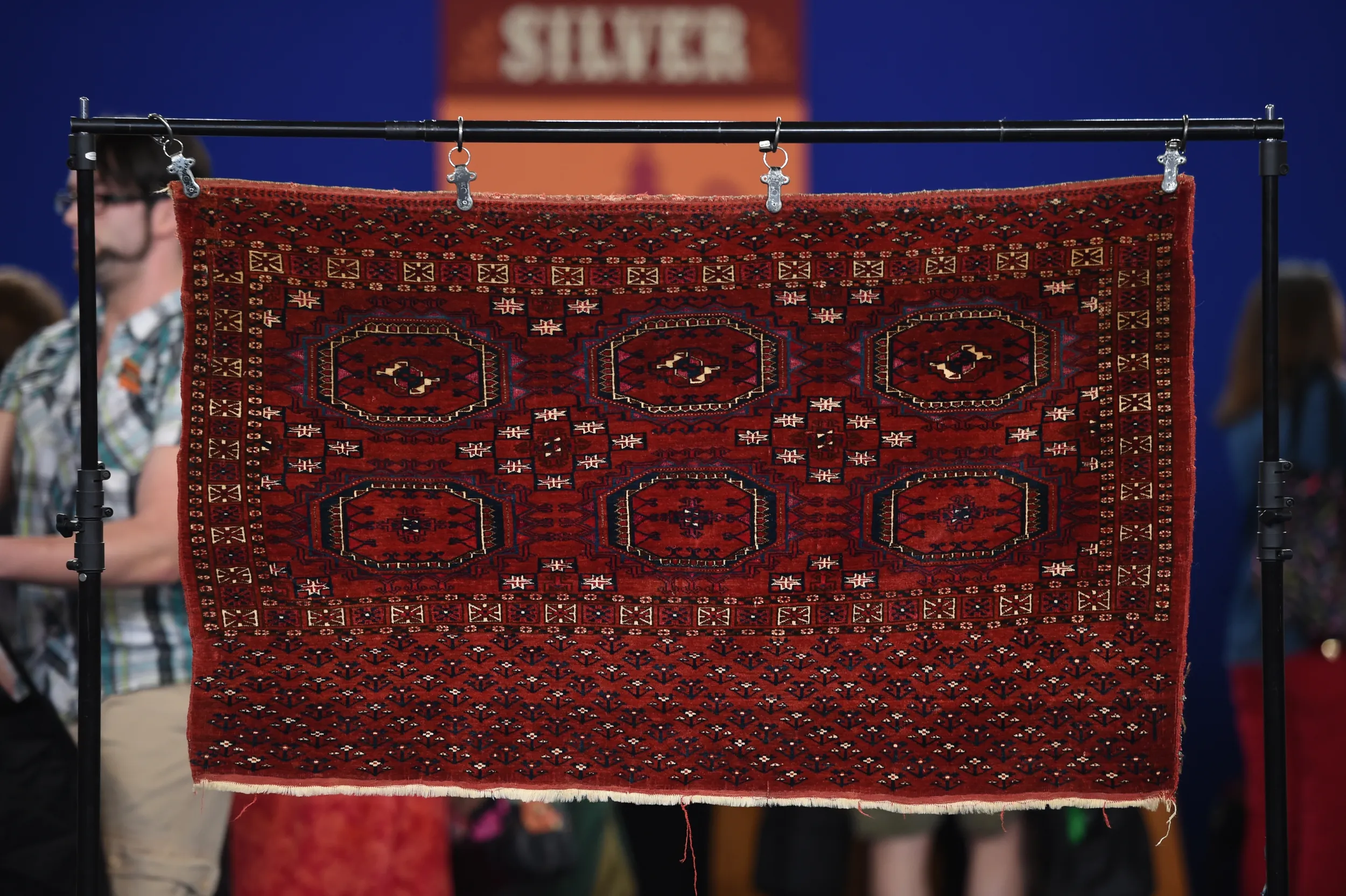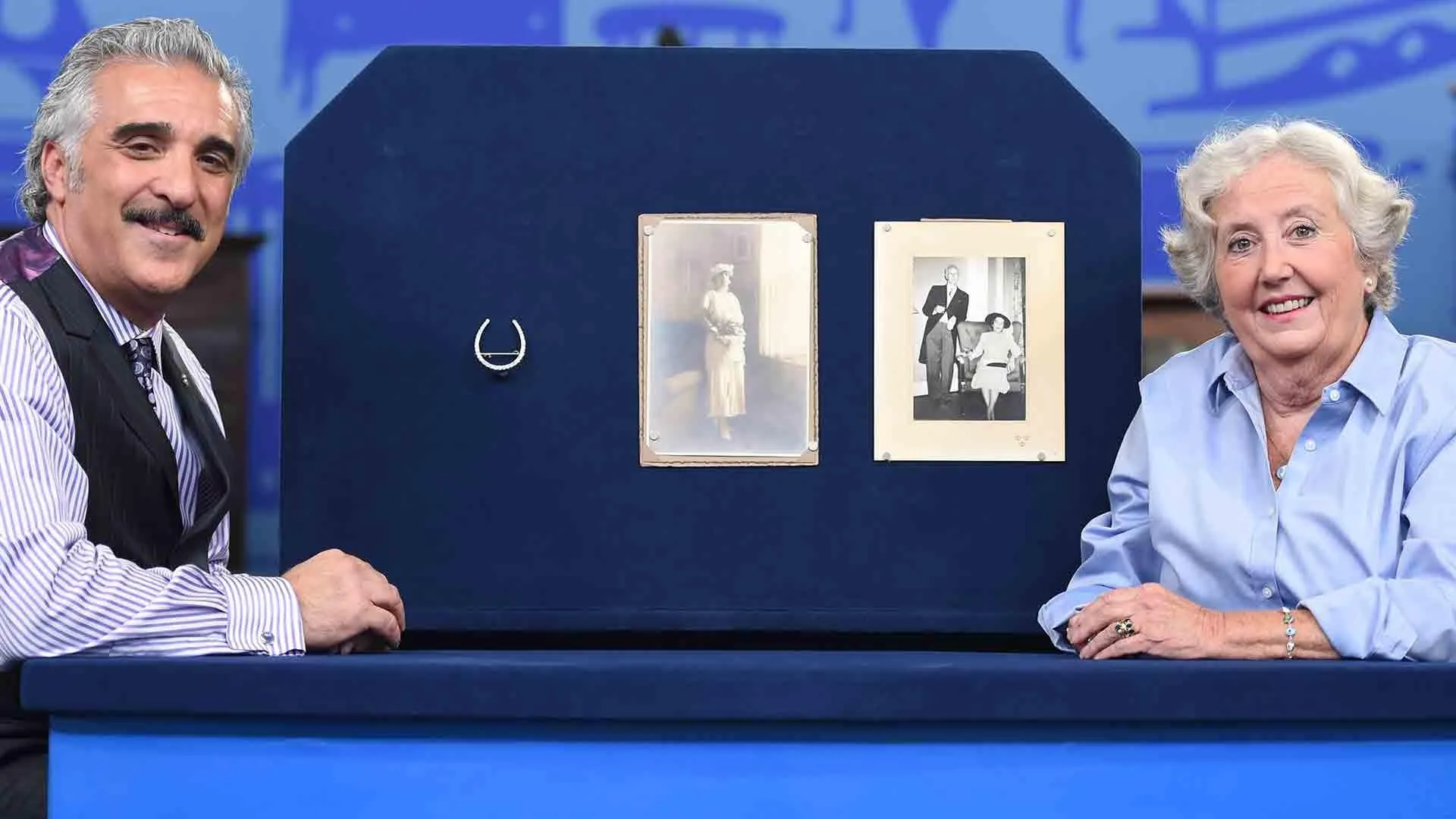GUEST: It had belonged to my paternal grandmother, who was very fond of Oriental rugs, and it went to my father when she died. And it was never displayed. My father had it in a chest of drawers, and when my now-husband went to ask for my hand in marriage, my father agreed, and then my husband, Forbes, said, "Well, what about the dowry?" And apparently my father blanched and then Forbes said, "Well, I was thinking maybe two goats and a chicken." So then my father laughed and went to the chest of drawers and pulled out the rug and said, "Will this do?" And Forbes was very pleased. So we have had this rug now for 34 years, but we don't know anything about it.
APPRAISER: It's a Turkmen rug, which is woven in central Asia by the Turkmen people. This particular style was woven by a group of Turkmen called the Saryk. They were nomadic people. Their primary occupation was raising sheep. And they would chase pasture land across central Asia, and they lived in yurts and tents and they'd pack up... Every time they needed to find new pasture land, they'd move on. And what's interesting about Turkmen weavings is that for centuries, they've stayed the same. They've been very canonistic is what you say, where things made in the 18th century would be very similar to things made in the late 19th century. And each little tribal group of the different Turkmen sub-tribal groups had their own set of patterns, their own set of ideas, and they followed those really for at least the two centuries, two and a half centuries that we know of things, and probably much longer. I would date this piece into the 1860s, 1880s, in terms of when it was woven. The Saryk use this, this is called a gˆl, which is really just Turkic for "flower." So it's a stylized flower motif. One of the other really interesting things about this piece in particular is all of the magenta color is all woven in silk.
GUEST: Oh.
APPRAISER: The silk was something they were trading for. And it always indicates that if you have a piece with silk in it, it was a very special piece when it was woven. The other thing I love about Turkmen rugs is that, if you look at the back, they're incredibly finely woven. Lots of knots per square inch, done on a very primitive loom, and it really shows the dedication of the weaver and the traditions of rugs in that culture.
GUEST: What would the rug have been used for?
APPRAISER: Okay, well, that's a great thing, because what I love about your story is you and your husband, or your husband, really brought this rug full circle.
GUEST: Oh!
APPRAISER: When this rug was made in the late 19th century, it was really made as a dowry piece.
GUEST: Oh, really!
APPRAISER: It was something that was made to be hung on a camel. It's called a chuval, it's a trapping, and would have been used to decorate the camel in the wedding procession of the Turkmen people.
GUEST: Oh, that's great.
APPRAISER: And so, I would put a retail value on this piece today in the $5,000 to $7,000 range, retail.
GUEST: Oh, wow.
APPRAISER: It's a really nice piece. It's something you could hang on the wall, throw it over the back of a sofa. It's something you should enjoy and remind you of your marriage every day, which is great.
GUEST: (laughs)
APPRAISER: On most days.
GUEST: On most days, that's correct.












